Tosh Berman's Blog, page 153
May 26, 2018
"Tosh: Growing Up in Wallace Berman's World" by Tosh Berman (City Lights Books)
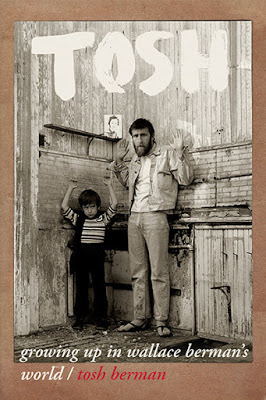
Ladies and Gentleman, this is a photograph by my father Wallace Berman. This will be the cover for my memoir "Tosh: Growing Up in Wallace Berman's World." Coming out on City Lights Books in January 2019. - Tosh Berman
City Lights Books website for further information: http://www.citylights.com/book/?GCOI=87286100746120
Published on May 26, 2018 14:12
May 23, 2018
"The Despair of Monkeys and Other Trifles" a Memoir by Françoise Hardy; Translated by Jon E. Graham (Feral House)
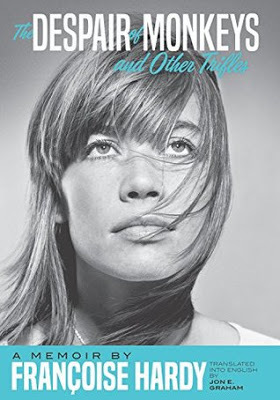 ISBN: 978-1-62731-060-4Françoise Hardy, along with Serge Gainsbourg, France Gall, and of course her husband, Jacques Dutronc is one of the great architects of the French pop sound, sometimes known as Yé-Yé. For an American, the French pop/rock world is almost like living in Superman's Bizarro, where everything is slightly different, or just a tad weird. The French are very formal in the recording well, and there is also a deep respect for poetry, which comes through the lyrics. Especially someone like a genius such as Gainsbourg. "The Despair of Monkeys and Other Trifles" is a fascinating memoir, for one, we don't get that much of an insight into that world if we don't speak in French. So, a book like this is essential to one who loves French 1960s pop music.
ISBN: 978-1-62731-060-4Françoise Hardy, along with Serge Gainsbourg, France Gall, and of course her husband, Jacques Dutronc is one of the great architects of the French pop sound, sometimes known as Yé-Yé. For an American, the French pop/rock world is almost like living in Superman's Bizarro, where everything is slightly different, or just a tad weird. The French are very formal in the recording well, and there is also a deep respect for poetry, which comes through the lyrics. Especially someone like a genius such as Gainsbourg. "The Despair of Monkeys and Other Trifles" is a fascinating memoir, for one, we don't get that much of an insight into that world if we don't speak in French. So, a book like this is essential to one who loves French 1960s pop music. Hardy's life is not unusual, but still a troubling family background. Her mother was cold, and her sister was insane. And her long-term relationship with Jacques Dutronc is both a head-scratcher and kind of awesome, in that they both respect their roles in the relationship - although it took Hardy a long time to accept certain aspects of her husband's mental and physical state. In a cliché saying, it sounds so French! In her manner, Hardy is very thorough on her stance in life, which is a mixture of sophistication and a believer of astrology, which she has written books on that subject matter, as well as a column in a publication. I'm also delighted that she knew Stockhausen and appreciated his music and other modern experimental composers of that era, even at the height of her fame in the 1960s.
Indeed an iconic beauty, but I'm not surprised of her unease with her physical appearance or her feelings of stage fright. For me, the way she sings there is a hesitation like she wants to grant the listener an invitation into their lives. Which I think is one of her big appeals as a singing artist and songwriter. There's a hesitation in her manner that is very seductive. Still, she was then, and I suspect still, a major player in French pop music world. Reading the book, you come upon every significant French star - both on artists she worked or ran around with. So the reader gets a nice snapshot of the scene at the time. The French entertainment world was/is a small one, so I suspect it's difficult to avoid anyone of importance. For example, even my beloved Louis Furey is mention here and there in the book, and he's obscure like a ghost in the English speaking world.
If there is a weakness in the book, it may be within the English translation of Hardy's prose in French. Reading the book, I feel like I'm reading a translation which usually means there is something wrong with the style of the translator. Or it may be just Hardy's writing itself. Still, if you are a fan of Hardy's music, this book is a must-read. A few years ago I published Serge Gainsbourg's biography by Gilles Verlant, and this book is an excellent companion piece, due to the coverage of the French pop music world, which is a mystery to most French non-speaking people.
Published on May 23, 2018 16:31
May 22, 2018
The Joker on Tosh Talks
The Joker on Tosh Talks
My obsession with the great American fictional character The Joker. The main villain for Batman/Bruce Wayne. Visually based on "The Man Who Laughs," starring Conrad Veidt. Here I riff through the idea of The Joker. Both in my life and in the White House. Tosh Berman, the host of Tosh Talks.
Published on May 22, 2018 23:00
May 15, 2018
Adam Parfrey 1957 2018 on Tosh Talks
My thoughts and commentary on Adam Parfrey's Feral House and his importance as a publisher. Also some personal observations on the issues of publishing and fathers. - Tosh Berman
To read my article I wrote on Adam for the L.A. Weekly go here:
http://www.laweekly.com/arts/publishing-provocateur-adam-parfrey-has-died-but-his-feral-works-live-on-9454557
Published on May 15, 2018 13:25
May 7, 2018
"Experimental Music: Cage and Beyond" by Michael Nyman (Cambridge University Press)
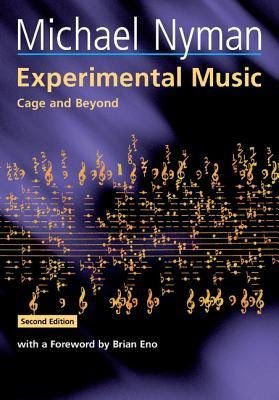 ISBN: 0-521-65383-5Even though it is only an illusion, but it seems that when John Cage walked into our room, the world has re-started in some fashion. Cage is the stone that was thrown into the pond, and future experimental music came from those little ripples from that rock. Michael Nyman, a great composer, by the way, wrote this book in 1974 at the height of Brian Eno's Obscure Records label, where he focused on the British wing of the musical avant-garde. Before Nyman's work with filmmaker Peter Greenaway, he was acutely aware of the tradition of contemporary classical music and all its strange and beautiful routes it took through the later years of the 1940s to the publication date of this book. In such a fashion the book appears to be a classic textbook on its subject matter, and Nyman is very much the instructor in taking the reader from point A to point B, and so forth. Not one only gets the foundation of Cage, but also the works of Fluxus era composers up to the British talent such as Gavin Bryars, Christopher Hobbs, and the Scratch Orchestra, as well as the world of Terry Riley, LaMonte Young, Philip Glass, and Steve Reich. Illustrated with music scores and rare photos, this is a remarkable and essential piece of work regarding the world of the avant-garde sounds and its artists.
ISBN: 0-521-65383-5Even though it is only an illusion, but it seems that when John Cage walked into our room, the world has re-started in some fashion. Cage is the stone that was thrown into the pond, and future experimental music came from those little ripples from that rock. Michael Nyman, a great composer, by the way, wrote this book in 1974 at the height of Brian Eno's Obscure Records label, where he focused on the British wing of the musical avant-garde. Before Nyman's work with filmmaker Peter Greenaway, he was acutely aware of the tradition of contemporary classical music and all its strange and beautiful routes it took through the later years of the 1940s to the publication date of this book. In such a fashion the book appears to be a classic textbook on its subject matter, and Nyman is very much the instructor in taking the reader from point A to point B, and so forth. Not one only gets the foundation of Cage, but also the works of Fluxus era composers up to the British talent such as Gavin Bryars, Christopher Hobbs, and the Scratch Orchestra, as well as the world of Terry Riley, LaMonte Young, Philip Glass, and Steve Reich. Illustrated with music scores and rare photos, this is a remarkable and essential piece of work regarding the world of the avant-garde sounds and its artists.
Published on May 07, 2018 16:28
May 4, 2018
"Francis Picabia: Littérature" (Small Press Books)
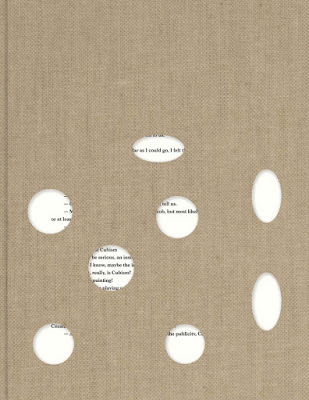 ISBN: 978-1-942884-24-8There are individuals from cultural or the visual art world that seems so romantic, that they can't possibly exist. Francis Picabia was undoubtedly on the planet Earth and was a fantastic artist and poet. "Francis Picabia: Litterature" is a collection of black ink drawings that were used for the DADA journal "Litterature." This slim book is as elegant as the drawings. Picabia's work is very sexy, and it flirts with the island of Eros, in that it's provocative, witty, and incredibly seductive. The book also has excerpts from Picabia's literary work "Caravansérail" which regards Andre Breton and his world. But with of course a touch of erotica. This book is in a limited edition of 500 copies. I strongly suggest if you are either a fan of the DADA world or love Picabia's work - either with words or ink, do get it.
ISBN: 978-1-942884-24-8There are individuals from cultural or the visual art world that seems so romantic, that they can't possibly exist. Francis Picabia was undoubtedly on the planet Earth and was a fantastic artist and poet. "Francis Picabia: Litterature" is a collection of black ink drawings that were used for the DADA journal "Litterature." This slim book is as elegant as the drawings. Picabia's work is very sexy, and it flirts with the island of Eros, in that it's provocative, witty, and incredibly seductive. The book also has excerpts from Picabia's literary work "Caravansérail" which regards Andre Breton and his world. But with of course a touch of erotica. This book is in a limited edition of 500 copies. I strongly suggest if you are either a fan of the DADA world or love Picabia's work - either with words or ink, do get it.
Published on May 04, 2018 15:47
"Coal Black Mornings" by Brett Anderson (Little Brown, UK)
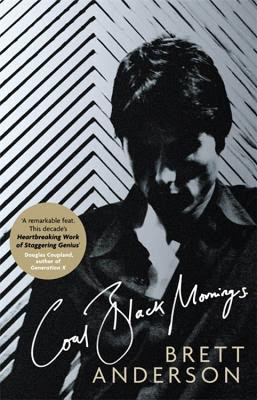 ISBN: 9781408710500It is my interest to read memoirs that focus on the early years of its subject matter, due that I wrote a memoir "Tosh" (City Lights Books) that does the same thing. Brett Anderson is the lyricist/songwriter and vocalist for the British band Suede. A band that I had mixed feelings for, but since I read this book by Anderson, I re-listened to his work with Suede, and now I appreciate their music and stance in British pop music of the 1990s. And they are still around, making interesting music. Still, I didn't know what "Coal Black Mornings" will bring to the literary memoir table. It's delicious.
ISBN: 9781408710500It is my interest to read memoirs that focus on the early years of its subject matter, due that I wrote a memoir "Tosh" (City Lights Books) that does the same thing. Brett Anderson is the lyricist/songwriter and vocalist for the British band Suede. A band that I had mixed feelings for, but since I read this book by Anderson, I re-listened to his work with Suede, and now I appreciate their music and stance in British pop music of the 1990s. And they are still around, making interesting music. Still, I didn't know what "Coal Black Mornings" will bring to the literary memoir table. It's delicious. Like a Suede song, Anderson captures the English landscape of poverty and struggling with a family that is partly eccentric - (especially the dad) and the rush of growing up with nothing, yet there is a future if one takes it by the ears and shake it a bit here and there. Born in a situation where Anderson felt trapped, it is art -both literature and music, which saved his hide. This book in a sense is a tribute to being focused on what you want to do, and not to lose sight of that goal or the world you want to obtain. The book ends as Suede signs the recording contract with Nude Records, but the build-up to that point is a delightful read, from a superb prose writer. He does get 'flowery' time-to-time, but it also serves him personality or character-wise, as well.
My main problem with Suede is not the aesthetics, but that their references to their culture are apparent. Saying that, and especially after reading this book, I think I'm a tad of a snob to criticize them for that alone. The fact is that they can write songs like "Trash," while not totally original, is nevertheless a beautiful pop record with an excellent (catchy) chorus. And "Coal Black Mornings" deals with that subject matter, with Anderson's approach to the songwriting craft, and his ability to stand alone, along with his bandmates, to work on the final product until they find it suitable.
I'm not sure what Anderson is like in person, but in this book, he's very nice to his fellow musicians and seems to be very fair-minded chap. So, this is not a gossipy book or one where he settles old scores, but more of an upbeat tale of his youth and hard work to obtain his vision. In theory, these type of books are a bore, but due to his writing skills and insightful way he can describe London in such poetic but realistic terms, this book is a real winner.
Published on May 04, 2018 11:21
DJ Lance Rock on Tosh Talks
I have known DJ Lance Rock for 20 years. Although Lance is known for his work as being the TV host of "Yo Gabba Gabba," a show I have seen at least twice (and loved), I mostly know him from the world of music. Lance's knowledge of and deep appreciation for music goes from dance music to Steel Guitar to the avant-garde sounds of Joan La Barbara, Steve Reich, Tony Conrad, to various Post-Punk artists to the nature of retail stores. We talk about books, as well as our love for Les Rita Mitsouko, Magazine, Buzzcocks, and the genius songwriting of Pete Shelley. Basically, two cultural nerds dishing the sounds around them. - Tosh Berman, Tosh Talks
Published on May 04, 2018 09:46
May 3, 2018
"Art & Vinyl" by Antoine de Beaupré (Fraenkel Gallery/Editions Antoine de Beaupré)
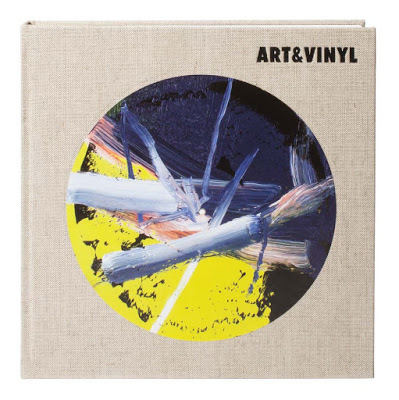 ISBN: 9782912794291 FRAENKEL GALLERY / EDITIONS ANTOINE DE BEAUPRÉ
ISBN: 9782912794291 FRAENKEL GALLERY / EDITIONS ANTOINE DE BEAUPRÉOf all objects on this planet, the vinyl record and its packaging is probably the one thing that I treasure the most. The size of a 12" or even a 7" piece of vinyl strikes me as the perfect size to appreciate the work that is in front of me. Some people have pictures of their family or pets on their I-Phones, and some even have food, but for me, it's the picture of a favorite album that warms my heart. That one image brings me to a different world or a landscape that is redefined to another level of existence. I go to record stores, not only to buy music but also to look at the album covers. I very much treat a visit to a record store as if one visits a museum or gallery. It's interesting to know that many artists feel the same way, regarding the vinyl album and its cover.
"Art & Vinyl" (FRAENKEL GALLERY / EDITIONS ANTOINE DE BEAUPRÉ) is edited by Jeffrey Fraenkel and Antoine de Beaupré, whose records are in his collection that is in this book. He is also the founder of Librarie Galerie 213 in Paris. There are many books on the vinyl record as music and as a visual, but "Art & Vinyl" is the best volume on that subject matter. For one, this expensive book is superbly designed, and the reproductions of album covers and their vinyl is perfection at work.
The focus is on the fine arts and not the commercial arts. All the covers and designs in this book are by well-known artists and photographers. And there are surprises here. I didn't know for instance that Gerhard Richter did a painting on a Glenn Gould album. Or that Yves Klein designed the album and label for a recording of a lecture he gave at a museum. Beyond that, there are the famous works, for instance, Sgt. Pepper's Lonely Hearts Club Band,"(Peter Blake & Jann Haworth), "Best of Cream" (Jim Dine), "Exile on Main Street" (Robert Frank), and others.
There are also artists who did covers, but also made the recordings as well. Joseph Beuys, Yves Klein, Jean Dubuffet, Christian Marclay and Wolfgang Tillmans all made their records under their name. Noticing the relationship between the visual and recording arts is interesting. Many musicians do visual art, so why not are artists making music? In a sense it's another platform for these talented people to explore, and "Art & Vinyl" covers that field quite well. Not only a remarkable book, but an essential book for designers, but also to expose the thread between high-end artists and the vinyl graphic and recording world.
Published on May 03, 2018 13:58
April 29, 2018
I'd Die for You and Other Lost Stories" by F. Scott Fitzgerald (Scribner)
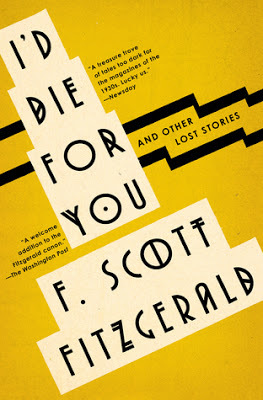 ISBN: 978-1-5011-4435-6Success is nice, but it's failure that draws us to the flame so we can get close to that landscape to taste it. F. Scott Fitgerald is in many ways the Jim Morrison of early American literature. Sexy, beautiful, and gets fascinating as his demons/alcoholism takes over the body and mind. The two sides of Fitzerald is the young successful, brilliant prose writer, who was at the top of his profession and world. Over a short period things crashed into the ground, and me, being me, is fascinated with the ruin that is Fitzgerald. The truth is, once a writer, always a writer. He didn't re-write "The Great Gatsby" or any of his early novels, but he did produce the magnificent "Pat Hobby Stories." One of the first to convey a cynical, even noir attitude toward the Hollywood dream machine, Fitzgerald never lost his talent. He lost perhaps his luck, and of course, his health. Still, his prose talent never failed him. It's interesting that there is now an excellent compilation of stories and film treatments that were unable to sell. Fitzerald's primary income (and he was paid very well) was magazines and Hollywood. Still, he had to struggle with getting works completed, as well as getting them published, and he often didn't succeed.
ISBN: 978-1-5011-4435-6Success is nice, but it's failure that draws us to the flame so we can get close to that landscape to taste it. F. Scott Fitgerald is in many ways the Jim Morrison of early American literature. Sexy, beautiful, and gets fascinating as his demons/alcoholism takes over the body and mind. The two sides of Fitzerald is the young successful, brilliant prose writer, who was at the top of his profession and world. Over a short period things crashed into the ground, and me, being me, is fascinated with the ruin that is Fitzgerald. The truth is, once a writer, always a writer. He didn't re-write "The Great Gatsby" or any of his early novels, but he did produce the magnificent "Pat Hobby Stories." One of the first to convey a cynical, even noir attitude toward the Hollywood dream machine, Fitzgerald never lost his talent. He lost perhaps his luck, and of course, his health. Still, his prose talent never failed him. It's interesting that there is now an excellent compilation of stories and film treatments that were unable to sell. Fitzerald's primary income (and he was paid very well) was magazines and Hollywood. Still, he had to struggle with getting works completed, as well as getting them published, and he often didn't succeed. "I'd Die for You and Other Lost Stories" is a fascinating set of short stories/film treatments that he couldn't get into print, and when offered the chance to change the narrative, he refused to do so. His attitude, and rightfully so, was either publish it as it is or sends it back to me (Fitzgerald). What makes this book swing are images of Fitzgerald that I have never seen, and the short introduction to each story by its editor Anne Margaret Daniel, who did a superb work of editing and detective work. Beyond that, there are only two stories that I like a lot: "The Pearl and the Fur" and "The Couple." Both are classic narrations on class difference and wealth. Even though a flawed fellow, Fitzgerald was a fantastic observer of American culture and its citizens. Overall I would recommend this collection to the Fitzgerald fan, but also to writers who struggle with their work. I tend to read literature about writing, and Daniel's mini-introductions exposes Fitzgerald's world at a tough time and place for our prince of American Literature.
Published on April 29, 2018 11:14



